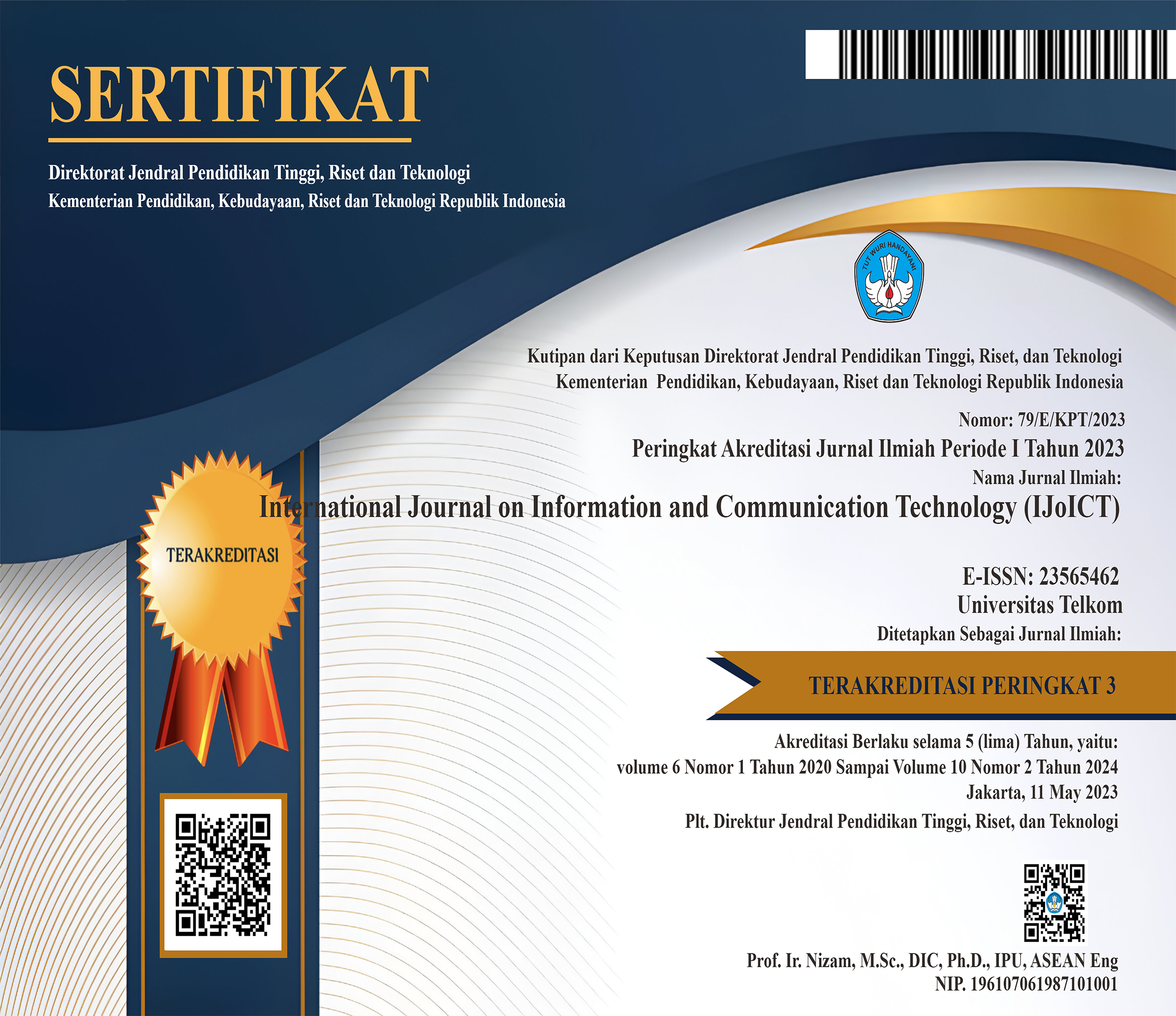Usability Improvement based on Hierarchical Task Analysis (Case Study on i-Caring)
 Abstract views: 865
,
Abstract views: 865
,
 PDF downloads: 707
PDF downloads: 707
Abstract
i-Caring (IT Telkom i-Gracias Collaboration and e-learning) is an LMS (Learning Management System)-based e-learning integrated in i-Gracias own by IT Telkom Bandung. This application is being used to facilitate the implementation of learning activities supporting the face-to-face discussion in class. I-Caring supports some functionalities, such as instructional material storage, assignment, quizzes, and communication through chats and forum. But the great functionalities are not supported by an interactive interface, which is not comply to QUIM (Quality in Use Integrated Measurement) standard. This paper explains our research results of evaluation and recommendation process. This research is using Hierarchical Task Analysis (HTA) which has some indicators to analyze the behavior of a sample lecturers and students which are randomly selected. Based on the questionnaires answers, we analyze the relations of each points on HTA principles using SPSS Statistics 20 tools. The recommendations are then formulated to improve i-Gracias user interface quality.
Downloads
References
Azwar, S., 2000. Validitas dan reliabilitas. Yogyakarta: Penerbit Pustaka Pelajar.
Bevan, N., 2006. International standards for HCI. Encyclopedia of human computer interaction, 362. [crossref]
Churchill, G.A., 2005. Dasar-Dasar Riset Pemasaran. Edisi 4, Jilid I.
Crystal, A. and Ellington, B., 2004. Task analysis and human-computer interaction: approaches, techniques, and levels of analysis. AMCIS 2004 Proceedings, p.391.
Embrey, D., 2000. Task analysis techniques. Human Reliability Associates Ltd, 1.
Diaper, D. and Stanton, N. eds., 2003. The handbook of task analysis for human-computer interaction. CRC Press.
Godbole, N.S., 2004. Software quality assurance: Principles and practice. Alpha Science Int'l Ltd..
Kieras, D.E. and Butler, K.A., 1997. Task Analysis and the Design of Functionality. The computer science and engineering handbook, 23, pp.1401-1423.
Mantei, Mylopoulos. 2001. Information Sistems Analysis and Design.
Matera, M., Rizzo, F. and Carughi, G.T., 2006. Web usability: Principles and evaluation methods. In Web engineering (pp. 143-180). Springer Berlin Heidelberg. [crossref]
Nugroho, Y.A., 2011. Olah Data dengan SPSS. Yogyakarta: PT. Skripta Media Creative.
Santoso, S., 2010. Statistik Multivariat: konsep dan aplikasi dengan SPSS.
Seffah, A., Donyaee, M., Kline, R.B. and Padda, H.K., 2006. Usability measurement and metrics: A consolidated model. Software Quality Journal, 14(2), pp.159-178. [crossref]
The Human Machine Interfaces. The International engineering consortium. www.iec.org.
Txomin. 2001. Compilation of task analysis methods. KTH industrial engineering and management. Swedia.

This work is licensed under a Creative Commons Attribution 4.0 International License.
Manuscript submitted to IJoICT has to be an original work of the author(s), contains no element of plagiarism, and has never been published or is not being considered for publication in other journals. Author(s) shall agree to assign all copyright of published article to IJoICT. Requests related to future re-use and re-publication of major or substantial parts of the article must be consulted with the editors of IJoICT.








.png)

.jpg)




